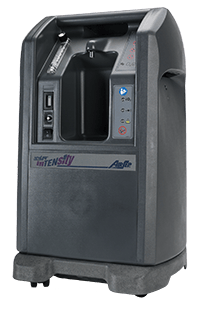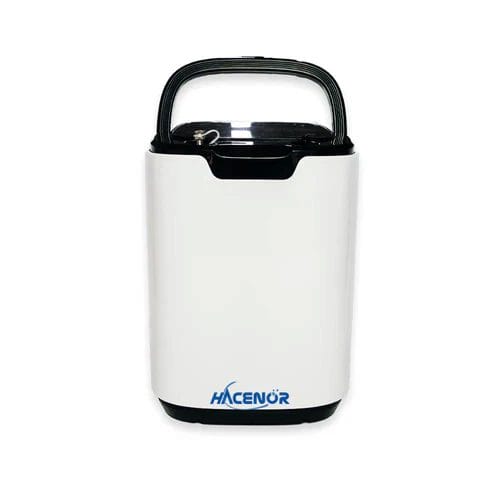
If you’re a Veteran who needs supplemental oxygen, the cost of an oxygen concentrator can be a real concern. Fortunately, the U.S. Department of Veterans Affairs (VA) offers benefits that may help pay for an oxygen concentrator. Whether you need a home unit, a portable device, or both, it’s worth understanding what the VA can do for you and how to navigate the system. Let’s break down what an oxygen concentrator is, why someone might need one, and how Veterans can use their VA benefits to help pay for this essential piece of medical equipment.
What is an oxygen concentrator?
An oxygen concentrator is a medical device that provides supplemental oxygen to people with certain medical conditions that affect the body’s ability to take in sufficient oxygen. These devices extract oxygen from the air, filter it, and deliver it in a concentrated form to the user through a nasal cannula or mask. Unlike traditional oxygen tanks, which store a fixed amount of oxygen, concentrators pull in ambient air and can run continuously as long as they have power.
There are two main types of concentrators:
- Home oxygen concentrators: These are stationary devices that plug into an electrical outlet and are used primarily inside the home.
- Portable oxygen concentrators (POCs): These are smaller, battery-operated units designed for mobility and travel.
Why would someone need an oxygen concentrator?
Oxygen therapy is commonly prescribed for people with chronic respiratory conditions that impair lung function. Common conditions include:
- Chronic obstructive pulmonary disease (COPD).
- Pulmonary fibrosis.
- Emphysema.
- Heart failure.
- COVID-related lung damage.
Low oxygen levels can lead to fatigue, confusion, shortness of breath, and, in severe cases, organ damage. A concentrator helps maintain safe oxygen saturation levels in the body and improves quality of life.
How much do oxygen concentrators cost?
The cost of an oxygen concentrator can vary widely depending on the type and features:
- Home concentrators range from around $600 to $2,000.
- Portable oxygen concentrators are typically more expensive, often costing between $2,000 and $4,000.
These prices don’t include accessories like extra batteries, carry bags, or maintenance costs. That’s why understanding your benefits as a Veteran is so important — because the out-of-pocket costs can add up quickly.
What is the VA’s Home Oxygen Program?
The Home Oxygen Program, also known as the Home Respiratory Care Program, is the VA’s primary way of delivering oxygen therapy to Veterans. Depending on medical needs, it may cover both home and portable concentrators. Coverage depends on meeting specific criteria and going through the proper channels. Per the Veterans Health Administration (VHA) Handbook, “It is VHA policy that home oxygen services must be provided to all eligible Veterans that have a valid annual prescription and meet medical indications for home oxygen and do not have risks that would produce serious harm with the prescription of home oxygen.”
To qualify for the program, you must:
- Be enrolled in VA health care.
- Have a diagnosed condition that requires oxygen therapy.
- Have a prescription from a VA doctor or an approved provider.
- Undergo tests, like pulse oximetry or arterial blood gas, that prove the need for oxygen.
Your primary care doctor or pulmonologist will conduct these tests to determine your oxygen levels. If your oxygen saturation falls below a certain threshold (usually 88% or lower), they’ll prescribe oxygen therapy.
The prescription will include:
- Oxygen flow rate (in liters per minute).
- Frequency (continuous or intermittent).
- Type of device (home, portable, or both).
Once your prescription is approved, the VA coordinates with a contracted provider to deliver and set up your equipment. That provider may also handle routine maintenance, supplies, and equipment replacement as needed.
Some Veterans may not have a copay, but this is determined by the priority group the VA has assigned you based on your disability level, income, or other factors. Others may be responsible for a copay for the equipment.
The VA may require follow-up visits and periodic testing to confirm that oxygen therapy is still necessary. They may also reassess whether the current equipment is still the best fit.
If you’d like to know if the VA will pay for an oxygen concentrator, you should contact your local VA health facility to find out what coverage is available.
Options outside the VA health care system
Other options outside the VA health care system include the following:
- Community Care Program: If the VA facility near you can’t provide timely care, you might be referred to a community provider under the VA’s Community Care Program, which can still lead to covered oxygen equipment.
- CHAMPVA: If you’re a spouse or dependent of a permanently disabled or deceased Veteran, you may qualify for CHAMPVA, which also covers DME, like oxygen concentrators.
A few key tips for Veterans
- Don’t buy before getting a prescription. The VA won’t reimburse you for equipment you purchased independently unless it was preapproved.
- Stick with VA-approved vendors. Even if a product looks cheaper online, the VA only works with specific contractors.
- Ask about portable options. If you’re active, travel often, or need to leave the house frequently, make sure your doctor includes that in the prescription.
- Check battery life and portability. Not all portable concentrators meet the VA’s requirements for air travel or long use. The VA can help find the right one.
Final thoughts on using VA benefits to pay for an oxygen concentrator
Getting an oxygen concentrator through the VA is possible, but it requires following the right process. Home and portable units may both be covered when medically necessary, but each has its own approval path. The VA Home Oxygen Program is designed to make things easier, ensuring Veterans receive the care and equipment they need without overwhelming costs. If you’re unsure where to start, talk to your VA primary care provider. They’ll guide you through the testing, paperwork, and referrals needed to get your oxygen therapy covered.








